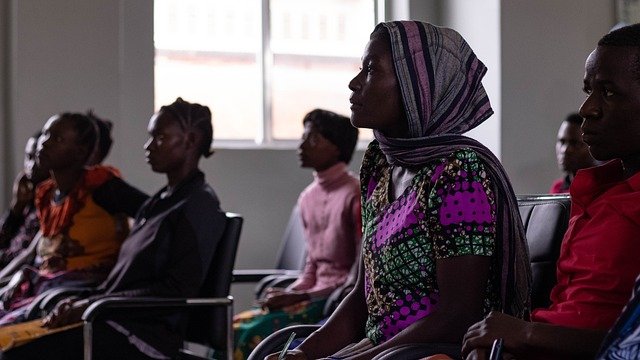Access to Education in Diverse Contexts
Access to education is shaped by a range of social, economic, and cultural conditions that vary widely across communities and regions. This article examines how migration, urbanization, aging populations, governance, and grassroots activism intersect with inclusion, inequality, employment, and wellbeing to influence who learns, how learning is delivered, and the long-term outcomes for individuals and societies.

Access to quality education depends on more than schools and teachers; it reflects community structures, cultural attitudes, public policy, and economic opportunity. In diverse contexts—urban centers, rural settlements, migrant communities, and aging societies—barriers to learning are often layered and interdependent. Addressing these barriers requires an approach that connects education to employment pathways, rights-based protections, community cohesion, and individual wellbeing. This article explores key dynamics shaping access and suggests practical considerations for policymakers, educators, and community advocates working in varied settings.
How do community dynamics shape access?
Community networks and local institutions influence whether children and adults can attend and complete learning programs. Strong community cohesion can support informal learning, mutual childcare arrangements, and local advocacy that improves school resources. Conversely, communities facing high inequality or social fragmentation may struggle to sustain school attendance and extracurricular opportunities. Community culture and norms—about gender roles, expectations for employment, or attitudes toward formal schooling—also shape participation. Local community-led initiatives often fill gaps in governance, but their effectiveness depends on access to funding, training, and inclusive decision-making structures.
What role does migration play in schooling?
Migration — internal or across borders — affects continuity of schooling, language of instruction, and equitable access to resources. Migrant families may encounter administrative barriers, documentation requirements, or language mismatches that impede enrollment. Schools in areas with high migration flows must adapt curricula and support services to diverse linguistic and cultural backgrounds. Temporary or seasonal migration can disrupt learning cycles, making targeted catch-up programs and flexible scheduling important. Ensuring migrant learners’ rights and integrating community interpreters or cultural mediators can reduce dropout rates and improve psychosocial wellbeing for students and families.
How does inclusion address inequality?
Inclusion in education goes beyond physical access to classrooms; it requires curricula, pedagogy, and school environments that respect diverse identities and learning needs. Inequality manifests in unequal funding, uneven teacher distribution, and differential access to technology and extracurricular supports. Inclusive policies—such as differentiated instruction, accessible facilities for learners with disabilities, and anti-discrimination measures—help reduce disparities. Addressing socioeconomic determinants of learning, including housing, nutrition, and parental employment, also supports equitable outcomes. Collaboration between schools, social services, and community groups strengthens pathways for learners who face multiple forms of disadvantage.
How do urbanization and aging affect education?
Rapid urbanization concentrates learners in cities, creating demand for more schools, diverse programming, and strategies to serve informal settlements. Urban contexts offer opportunities for partnerships with employers, cultural institutions, and technology providers, but also present challenges: overcrowded classrooms, spatial inequities, and strained public services. Aging populations influence lifelong learning priorities, as older adults seek education for wellbeing, civic participation, or re-skilling. Intergenerational learning models—connecting youth and older adults—can enhance social cohesion, transmit culture, and support community resilience while expanding the conception of who education serves across the lifespan.
How are employment, rights, and governance linked?
Education interacts closely with employment markets, legal rights, and governance systems. Education that aligns with local employment opportunities can improve livelihoods, but overly narrow vocational models may limit broader civic and critical skills. Rights-based frameworks—ensuring non-discrimination, free primary education, and protections for marginalized groups—create legal foundations for access. Governance matters at multiple levels: local school management, municipal planning amid urbanization, and national policy on funding and teacher training. Transparent governance and participatory decision-making can help ensure resources reach underserved areas and support sustained improvements in learning environments.
How can resilience, activism, and culture support learning?
Resilience in education systems means anticipating disruptions—conflict, displacement, climate shocks—and designing flexible responses such as remote learning, accelerated programs, and psychosocial support. Activism and community organizing have historically expanded access by advocating for rights, holding authorities accountable, and developing local alternatives where services are lacking. Cultural resources—local languages, arts, and knowledge systems—can be integrated into curricula to make learning relevant and to strengthen identity and wellbeing. Combining grassroots activism, culturally responsive pedagogy, and adaptive governance enhances the capacity of education systems to serve diverse populations.
Education access in diverse contexts requires integrated responses that recognize the interplay of social factors, economic pressures, governance arrangements, and cultural dynamics. Effective strategies blend inclusive policies, community engagement, and flexible delivery models that accommodate migration patterns, urban pressures, and demographic shifts. Addressing inequality means attending to structural determinants—employment, rights, and local cohesion—while supporting resilience and culturally grounded learning. Sustainable progress depends on coordinated action across sectors and careful attention to the lived experiences of learners in their communities.





